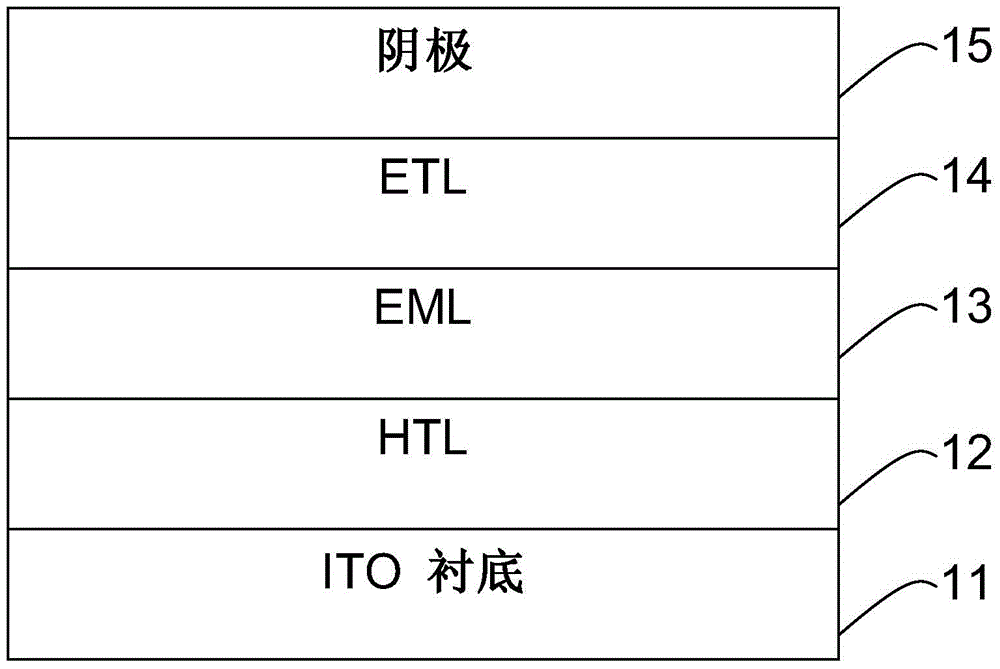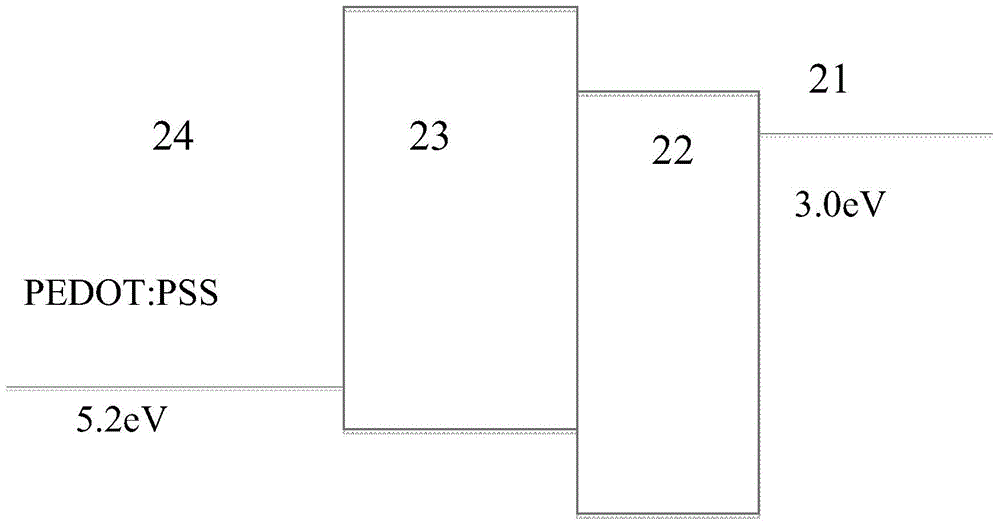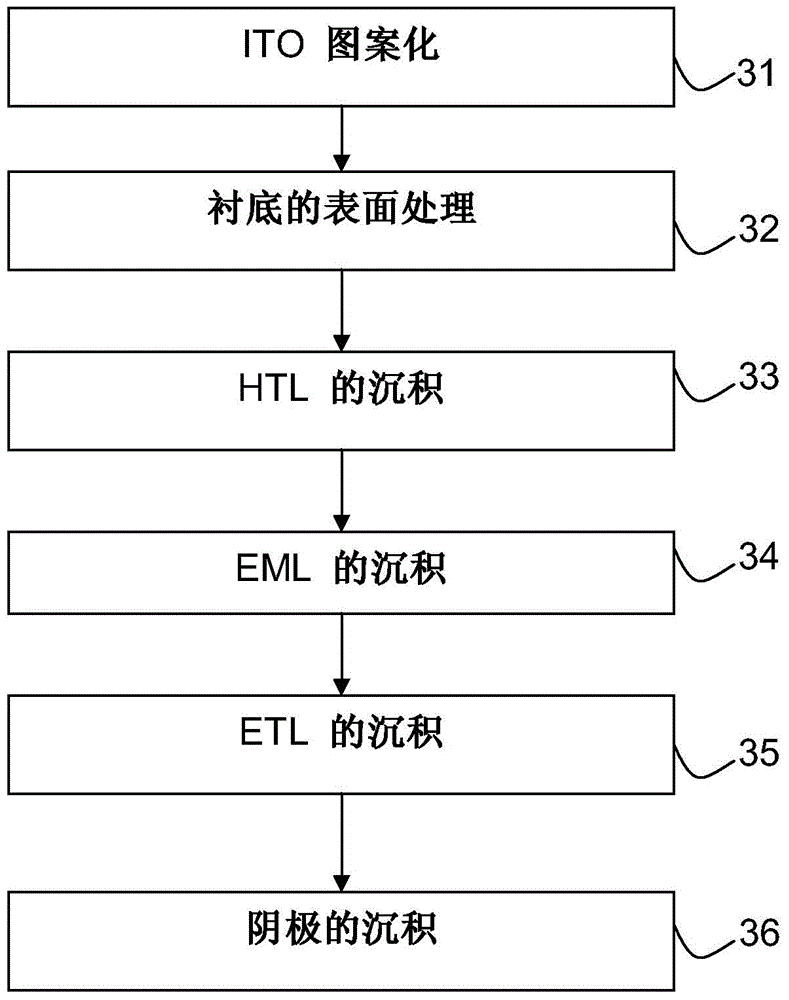Solution process electron transporting layer for polymer light emitting diode
An electron transport layer, light-emitting diode technology, applied in circuits, electrical components, electro-solid devices, etc., can solve problems such as PLED unsatisfactory
- Summary
- Abstract
- Description
- Claims
- Application Information
AI Technical Summary
Problems solved by technology
Method used
Image
Examples
example 1
[0036] Blue PLEDs fabricated according to embodiments of the present invention. The blue PLED consists of ITO / MoO 3 (10nm) / Blue EML: Multilayer structure of 10% FIrPIc(25nm) / TPBi(10nm) / Al(150nm) in PVK. The TPBi of the ETL layer was deposited by spin coating and annealed at a temperature of 100 °C for 10 minutes. Figure 4A Brightness curves of blue PLEDs at different voltages are shown. The brightness of the blue LED is plotted against voltage. The maximum brightness of the blue PLED is 892.5cd / m 2 .
example 2
[0038] Green PLEDs fabricated according to embodiments of the present invention. The green PLED includes ITO / MoO 3 (10nm) / Green EML: 10% Ir(ppy) in PVK 3(25nm) / TPBi(10nm) / Al(150nm) multilayer structure. The TPBi of the ETL layer was deposited by spin coating and annealed at a temperature of 100 °C for 10 minutes. Figure 4B Brightness curves of green PLEDs at different voltages are shown. The brightness of the green LED is plotted against voltage. The maximum brightness of the green PLED is 1564.8cd / m 2 .
example 3
[0040] A red PLED fabricated according to an embodiment of the invention. The red PLED consists of ITO / MoO 3 (10nm) / red EML: 10% hex-Ir(piq) in PVK 3 (25nm) / TPBi(10nm) / Al(150nm) multilayer structure. The TPBi of the ETL layer was deposited by spin coating and annealed at a temperature of 100 °C for 10 minutes. Figure 4C Displays the brightness curve of the red PLED at different voltages. The brightness of a red LED is plotted against voltage. The maximum brightness of the red PLED is about 640cd / m 2 .
PUM
 Login to View More
Login to View More Abstract
Description
Claims
Application Information
 Login to View More
Login to View More - R&D
- Intellectual Property
- Life Sciences
- Materials
- Tech Scout
- Unparalleled Data Quality
- Higher Quality Content
- 60% Fewer Hallucinations
Browse by: Latest US Patents, China's latest patents, Technical Efficacy Thesaurus, Application Domain, Technology Topic, Popular Technical Reports.
© 2025 PatSnap. All rights reserved.Legal|Privacy policy|Modern Slavery Act Transparency Statement|Sitemap|About US| Contact US: help@patsnap.com



